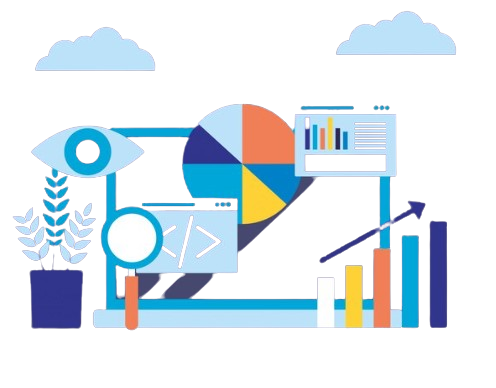The rise of Graph Databases marks a paradigm shift in how we manage and analyze data. Their ability to navigate relationships with unparalleled efficiency opens doors to a new era of insights and discoveries. Tanbits offers Big Data services, empowering organizations to unlock the true potential of their data.
In the intricate tapestry of Big Data, traditional relational databases often fall short when managing complex relationships. Enter Graph Databases is a revolutionary approach that brings a new efficiency level to navigating interconnected data. Join us on a journey through the rise of Graph Databases and discover how they’re transforming the landscape of data management.
Unraveling the Complexity of Relationships
- The Limitations of Relational Databases
Relational databases excel at handling structured data but can become unwieldy when managing intricate relationships. Graph Databases address this limitation by providing a flexible and intuitive way to represent and query interconnected data.
- The Power of Nodes and Edges
At the heart of Graph Databases are nodes, representing entities, and edges, representing the relationships between these entities. This simple yet powerful model allows for the seamless traversal of complex relationships, making it ideal for scenarios where understanding connections is paramount.
- Real-World Applications
From social networks to fraud detection and recommendation engines, Graph Databases find applications in diverse fields. Their ability to uncover patterns and relationships within vast datasets makes them invaluable for extracting meaningful insights.
Navigating the Landscape of Graph Databases
- Graph Query Language (GQL)
They utilize specialized query languages like GQL, designed for efficiently traversing and querying graph structures. This enables developers and data scientists to express complex queries more naturally and intuitively.

- Scalability and Performance
They are engineered for performance, ensuring quick information retrieval even as datasets grow. Their unique structure allows for optimized traversal of relationships, making them highly scalable and responsive.
- Relationship-Centric Data Modeling
Unlike traditional databases, which rely on tables and rows, they emphasize relationships. This relationship-centric approach aligns with the way we perceive and understand the world, making it an intuitive and powerful paradigm for data modeling.
Embracing Graph Databases in Your Data Strategy
- Identifying Use Cases
Understanding where it shines is key to incorporating them into your data strategy. Whether it’s revealing fraud patterns, optimizing supply chain networks, or personalizing content recommendations, identifying the right use cases is essential.
- Integration with Existing Systems
It can seamlessly integrate with existing systems, complementing traditional databases or data warehouses. This integration allows organizations to leverage the strengths of both models for comprehensive data management.
- Tools and Platforms
With the rise of it, a variety of tools and platforms have emerged. From open-source solutions like Neo4j to cloud-based services, choosing the right tools depends on factors like your specific use case, scalability requirements, and development preferences.
Graph Databases: Challenges and Opportunities
- Data Quality and Completeness
Ensuring data quality and completeness is critical for the success of Graph Databases. Incomplete or inaccurate data can lead to misleading insights, emphasizing the importance of maintaining data integrity.
- Evolving Ecosystem
The Graph Database ecosystem is evolving rapidly, with continuous improvements and new features. Staying informed about the latest developments and best practices is crucial for organizations looking to harness the full potential of this technology.
Conclusion
In conclusion, the rise of Graph Databases marks a paradigm shift in how we manage and analyze data. Their ability to navigate relationships with unparalleled efficiency opens doors to a new era of insights and discoveries. Tanbits offers Big Data services, empowering organizations to unlock the true potential of their data.
BACK










